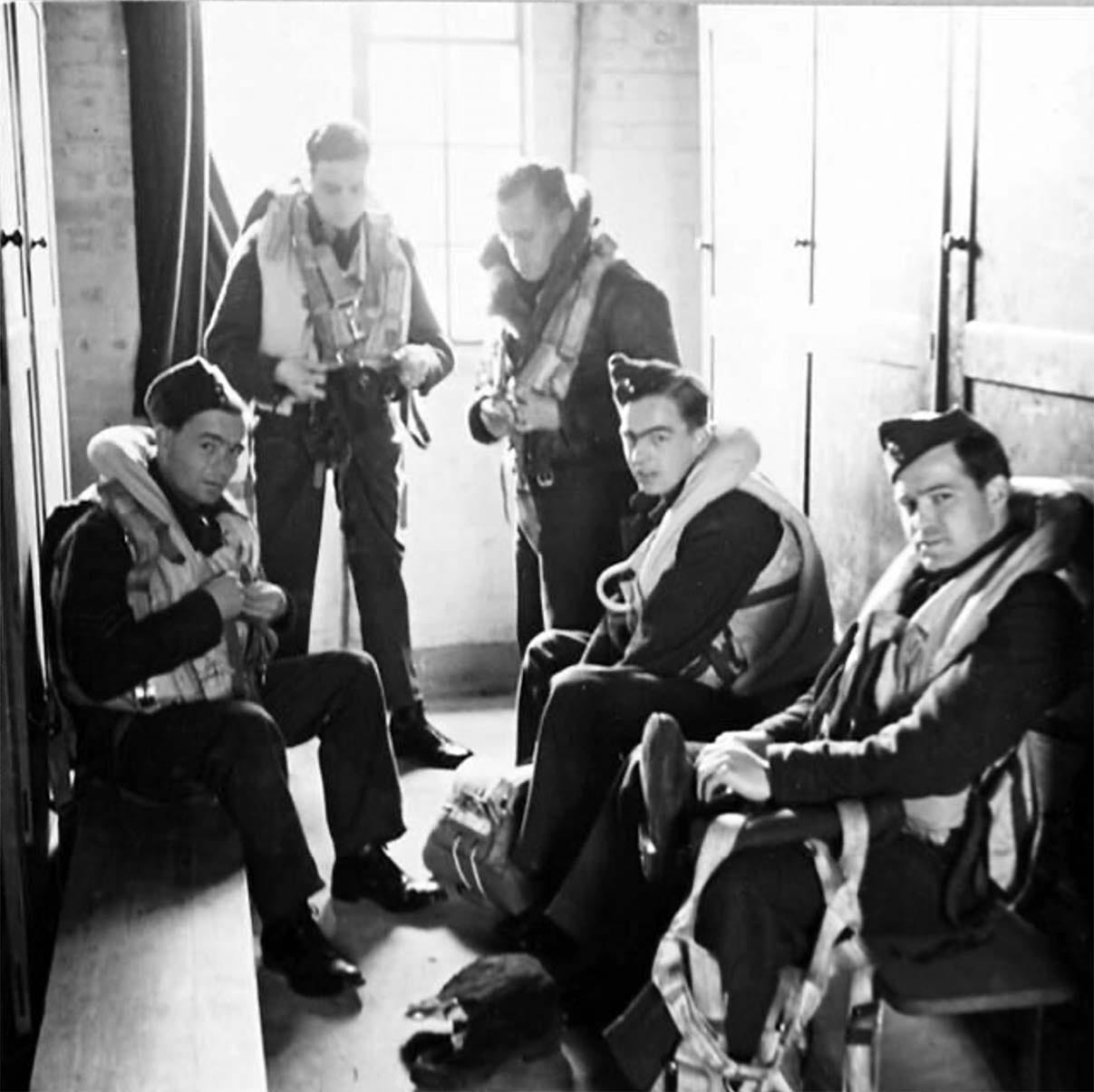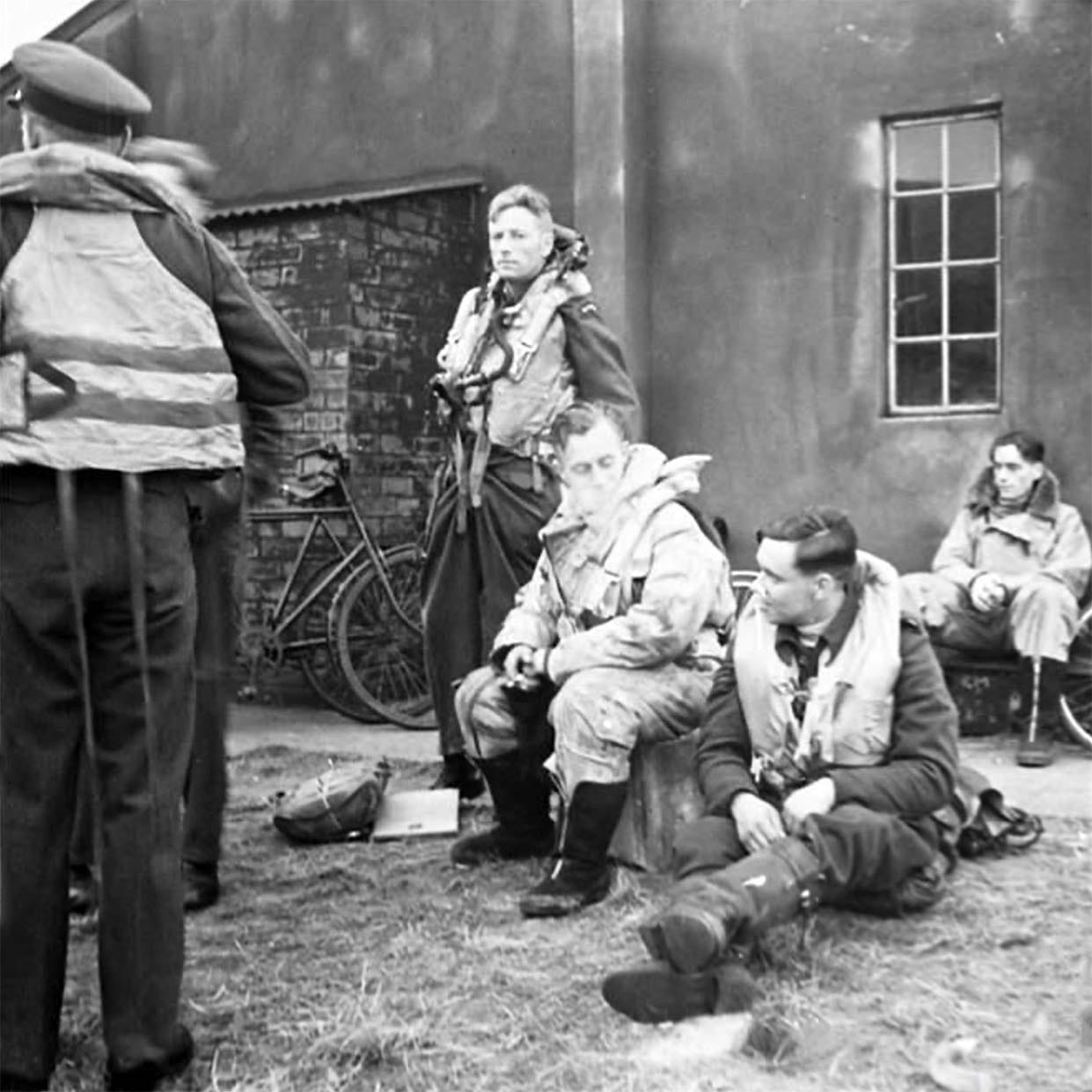'380 acres of complete devastation'
10th September 1942: The RAF targets Dusseldorf - demonstrating the huge destructive power of the ever growing heavy bomber fleet

Unable to find the resources to launch a ‘Second Front’ in Europe, Churchill had promised Stalin that he would mount ever more devastating attacks on Germany from the air. The operations of RAF Bomber Command were still subject to a number of variables, including the weather and the ability to navigate accurately to the target.
The Pathfinder target marking force was just getting established and was developing its techniques. Founded in August 1942 this was a group of Squadrons dedicated to accurately finding the target and marking the bomb aiming point for the ‘Main Force’ that would follow. The Gee navigation system was now being disrupted by German countermeasures so they fell back on visual systems:
In September a new technique was used and proved effective. The flare dropping aircraft were divided into two groups, one of which, called the finders, dropped long sticks of flares right across the target area, and the other, called the illuminators, were detailed to search for the aiming point itself and, when they had found it to illuminate it with much shorter sticks of flares; the visual markers then marked this aiming point with incendiary bombs, in default of target indicators. Because of the difficulty of distinguishing incendiaries, salvoes of 30 lb. and 250 lb. incendiaries were dropped on the aiming point or as near to it as could be managed.1
When the weather and moon conditions were right, the target was marked correctly and the bomber stream was concentrated on the target in a short period of intense bombing the results could be devastating.
All of these factors came together for the raid on the 10/11th September, causing more destruction than had ever been achieved before, apart from one of the experimental 1000 bomber raids. Bomber Command was beginning to have the impact that was hoped for:
At Dusseldorf, 360 aircraft dropped 700 tons of bombs. Though a large part of the attacking force concentrated its effort on the main objective, starting a number of extensive fires (see Appendix VII [below]). scattered fires were also seen west of the target, and some bombs fell at Krefeld, Munchen-Gladbach and adjacent towns. Thirty bombers are missing, five crashed and three came down in the sea.
...
Dusseldorf
Assessment of damage from photographs taken the day after the attack on the 10th/11th is rendered difficult as parts of the town are wholly obscured by the smoke of fires still burning.
It is at present only possible to give some idea of the extensive damage that has actually been caused. In the centre of the town there are six noteworthy areas of damage, the three largest of which are 3/4 mile long, varying in-width from 90 yards to 1/4 mile, 1/2 long by about 180 yards wide, and nearly 1/4 mile long and 250 yards wide.
The damage to residential and industrial property on both banks of the Rhine is severe, and evacuation will be hindered by a direct hit on the main station, which appears to have been heavily damaged2.
The later post raid assessment was also seen by the War Cabinet:
Dusseldorf (10th/11th September).
It is now apparent that, measured by the extent of destruction to industries and communications, this attack was the most profitable of all our bombing raids, with the exception of that on Cologne on 30th/31st May.
Large areas were devastated in both Rostock and Lubeck but this did not result in more than a fraction of the industrial damage done in Dusseldorf.
‘The estimate of 380 acres of complete devastation mentioned above does not include innumerable isolated incidents of bomb and blast damage throughout the city and its suburbs.’
In Dusseldorfs 380 acres of complete devastation no less than 30 factories and important works were either completely destroyed or so damaged that output must be seriously curtailed.
Among them were six factories making steel products or machinery, two factories making steel tubes, one making machine tools and magnetic mines, two chemical works and many other factories producing a variety of commodities such as enamel, paper, boilers, wire, insulating materials, railway wagons and harvesting machinery.
This formidable list of destroyed or seriously damaged factories is additional to the 24 factories damaged in the raid of the last night of August.
...
The estimate of 380 acres of complete devastation mentioned above does not include innumerable isolated incidents of bomb and blast damage throughout the city and its suburbs.
NB: the numbers of aircraft involved vary between different official accounts.

From the Air Situation Report for the week as reported to the British War Cabinet, see TNA CAB 66/28/48





